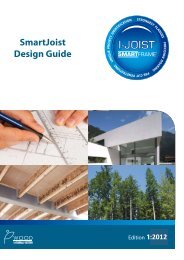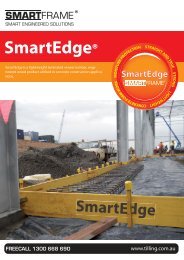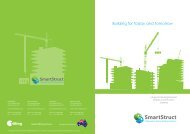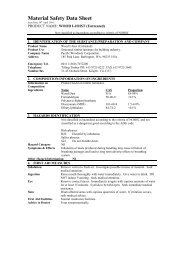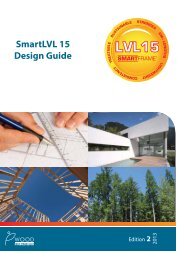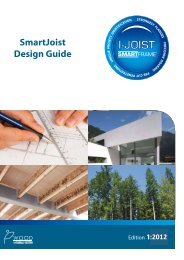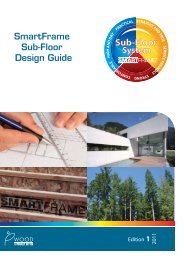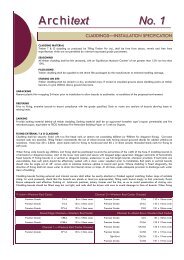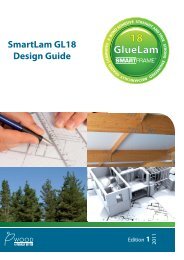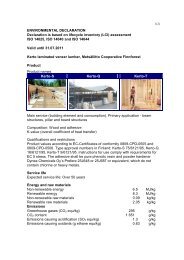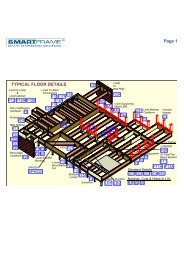SmartLam GL17C Brochure - Tilling Timber
SmartLam GL17C Brochure - Tilling Timber
SmartLam GL17C Brochure - Tilling Timber
You also want an ePaper? Increase the reach of your titles
YUMPU automatically turns print PDFs into web optimized ePapers that Google loves.
<strong>SmartLam</strong> GL17 Design /Effective span<br />
Normal structural analysis uses the centreline representation of the member. The term “span” can be defined in a number of ways and<br />
these are defined as follows:<br />
Clear span. This is the distance between the faces of any support. It is generally the one easiest to measure and read from the drawings<br />
Nominal span/centre-line span. This is the distance between the centre of the supports. This span is used to determine bending moments<br />
and deflections for continuous spaning SmartJoist members<br />
Design span/Effective span. This is the span used for single span members to determine the bending moment, the slenderness of<br />
bending members and the deflections. In AS 1720.1, this is the dimension referred to as “L”, and is defined below.<br />
Design span/Effective span is the distance between -<br />
• The centre of the bearing at each end of a beam where the bearing lengths have NOT been conservatively sized<br />
• The centre of notional bearing that have been sized appropriately, where the size of the bearing IS conservative.<br />
Diagram (a) shows beam where bearings have been designed appropriately. The effective span is taken as the distance between the centre of each bearing area<br />
Clear span (Distance between face of supports)<br />
Effective span (design span L)<br />
Diagram (b) shows beam where bearings at each end have been oversized. (This is frequently the case for beams that bear onto brickwork or concrete<br />
walls where the thickness of the wall is in excess of the area required to give the beam bearing capacity).<br />
To find the correct effective span:<br />
1. Calculate the minimum bearing required to carry the loads satisfactorily<br />
2. Add minimum bearing length to “clear span” distance<br />
Effective span (design span) L<br />
Clear span (Distance between face of supports)<br />
Centre-line span (distance betweeen centres of supports)<br />
Area of support<br />
required for<br />
bearing<br />
Length of<br />
Effective<br />
bearing<br />
Length of original<br />
bearing (oversized)<br />
span difference effective span resultant span description<br />
10% Max main span continuous<br />
10 – 30% 1.1 x main span continuous<br />
Above 30% difference main span single<br />
span difference = (major span - minor span) x 100<br />
(major span + minor span)<br />
The span to use in the case of unequal continuous spans is the "resultant span description " as shown in the table above.<br />
(Note: It is recommended for the most accurate designs, that the SmartFrame software be used.)<br />
<strong>SmartLam</strong> GL17 Design Guide 7



